Pediatrics Residency
Outpatient Experiences
Longitudinal Clinical Experiences
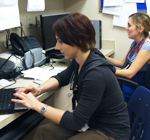
The Residency Program has several very strong General Pediatric ambulatory experiences. All PL1 residents have their afternoon weekly continuity clinic at the USF 17 Davis Pediatric Clinic or the TGH Healthpark clinic. Residents do not attend morning clinics during inpatient rotations (i.e. wards, NICU, PICU) and when post call. Both sites have dedicated academic general pediatricians. Residents establish their own panel of patients where they provide primary care to infants, children and adolescents for well child and acute care with a variety of medical problems. PL2 and PL3 residents have a second ½ day experience in either a community practice, hospital, Emergency Department or subspecialty setting.
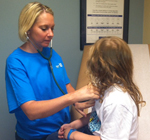
Continuity Clinics (primary)
We utilize an on-line primary care curriculum that consists of core pediatric continuity clinic topics discussed in a question and answer format. In addition, core continuity clinic topics are discussed during noon conferences throughout the year at both hospitals. Residents serve as their continuity clinic's patients' primary physician during their training. They work with a consistent group of residents and faculty weekly. They see their patients from infancy through age 21 for health maintenance, uncomplicated issues as well as complex, chronic medical problems. They routinely deal with family and psychosocial issues as well as behavioral and school problems and interact with social work and local schools. They deal with issues of practice management (i.e. pharmaceutical coverage, insurance, referrals) on a daily basis and utilize an EMR at both sites. Both clinics are part of a medical home program for children with special healthcare needs.
Both clinics participate in Reach Out and Read (ROR) programs and strongly support literacy promotion. The USF ROR program is one of the oldest in the state of Florida and has a vibrant volunteer program primarily utilizing undergraduate students.
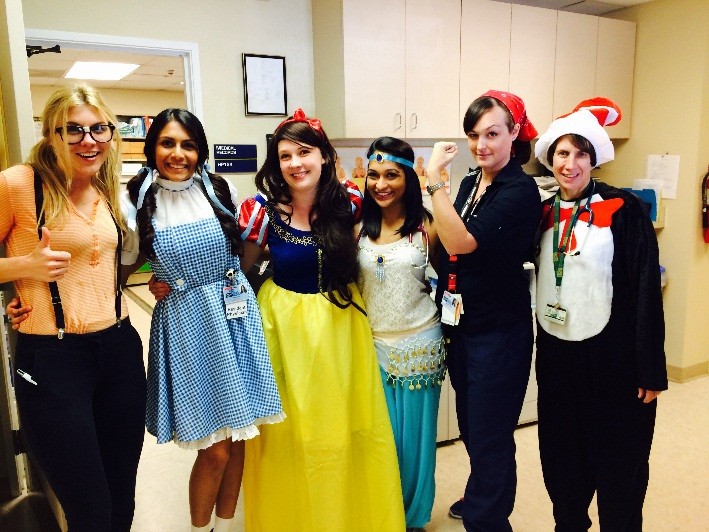
Community Continuity Experience (secondary)
The community-based continuity clinic experience is available to all PL2 and PL3 residents and provides a longitudinal experience in a variety of settings at either private practice or community health clinics (urban, rural and suburban). We currently have 38 locations available to the residents. Residents that plan to pursue fellowship training may choose a clinic in their chosen subspecialty. All subspecialties as well as emergency medicine and hospitalist medicine are available. All of these opportunities give the resident an opportunity to develop a relationship with a mentor and provide additional clinical experience and increases opportunity to conduct research.
Ambulatory/Acute Care Experience
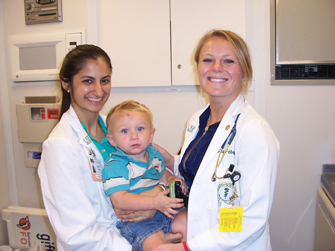
Residents spend up to two months each year in two primary care ambulatory clinics—Healthpark and 17 Davis. They are supervised by faculty in the general pediatric division. During each block rotation they have equal exposure to both of these clinics. They serve a diverse patient population including inner city underserved, Latino migrant children, children with special health care needs as well as middle class families.
Diagnoses encompass those seen at a general pediatric office—from mild illnesses like colds, otitis media and exacerbations of common diseases like asthma or eczema to children with special health care needs (CSHCN) including ventilator-dependent patients. Procedures such as laceration repair, I & Ds, nebulizations, rapid antigen testing (strep, RSV, influenza) can be performed in clinic.
A large amount of educational materials are available at both clinics as well as online. Residents play an active role in teaching medical students at both sites. The senior residents participate in the supervision of the residents along with the attending.
There is a structured telephone triage educational experiences for all residents. This includes responding to parents' calls during the day as well as after hours with review by the on-call attending. All PL2 and PL3 residents are audiotaped during their second and third year and the tape is reviewed by their clinic attending. This allows for direct observation of care and appropriate feedback. Structured Clinical Observations with feedback are done at various times throughout the year.
PL2 and 3s may do elective ambulatory rotations in their community continuity clinic office or with a different community physician. Other general ambulatory rotations include: USF Student Health Services, Child Protection Team, Sports Medicine, and After Hours Urgent Care.
Emergency Medicine
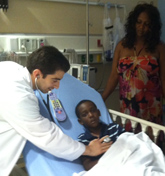
Interns spend 1 month during their first year of training in the very busy All Children's Hospital Emergency Center (EC) which sees about 42,000 patients per year. The EC has 25 private treatment rooms, 3 trauma bays and an 8 bed Clinical Decision Unit (CDU). Patients who will likely stay less than 24 hours may be admitted to the CDU. It also has specialized waiting rooms designed to isolate children with communicable diseases. Residents work 10 hour shifts in the EC and a board-certified pediatric emergency medicine attending is present at all times. The emergency center has easy access to the most advanced radiology and laboratory facilities. In addition to learning about initial medical management of a multitude of presenting conditions, residents also gain experience in blood draws, IV catheter placements, arterial blood gases, trauma evaluations, codes, suturing, I&Ds, lumbar punctures, reductions of dislocations, and splinting. Second year residents often rotate for one month in a pediatric urgent care center.
Residents also spend 1 month training at the Emergency Care Center at TGH. The Saunders Pediatric Emergency Care Center at Tampa General Hospital opened in 1982 as the first department dedicated solely to children on the West Coast of Florida. It has distinction in being a Pediatric Trauma Referral Center for the State of Florida and is the only Florida facility certified as a Pediatric Trauma Center by the American College of Surgeons. The annual volume is over 15,000 patients, including approximately 30% adolescents. The physical facility opened in 2009 and includes 10 private examination rooms. It is staffed 24 hours per day by Pediatric Emergency Medicine physicians who are all clinical faculty members of the Department of Pediatrics at the USF Morsani College of Medicine. It is also a vital part of the teaching program of medical students, ARNP and PA students, and housestaff from both Pediatrics and Emergency Medicine.
Developmental Pediatrics
Residents spend time at a variety of clinics during this second year rotation including the Early Intervention Program (EIP), the General Developmental Clinic, Neonatal Neurodevelopmental Clinic, Neuropsychiatry Clinic and specialty clinics for children with Spina Bifida, Cleft Palate and feeding Disorders Residents also have the opportunity to spend time in daycares and schools for those with developmental delay and special needs. Multidisciplinary experiences are provided with audiology, speech, occupational and physical therapists. Residents also participate in at least one home visit with an EIP service coordinator. Residents will gain experience in the evaluation, screening, and assessment of children and teenagers with behavioral and developmental problems. Common topics discussed during the month include developmental screening and assessment, language disorders, ADHD, autism, common developmental disorders, management of CSHCN in primary care, child abuse, pediatric under nutrition, and nutritional disorders in CSHCN.
Adolescent Medicine
The adolescent medicine rotation is a diverse, fun, and interesting month with multiple different experiences. We have four board-certified adolescent medicine physicians at USF and a full-time social worker. Clinical experiences reflect the diversity of the subspecialty. In addition to multiple sessions in general adolescent medicine clinic, these include the following: school-based clinics, adolescent HIV clinic, mobile van clinics at sites with high risk youth (shelters, schools, etc), university student health general and gynecology clinics, adolescent chronic pain management experiences, multi-disciplinary eating disorder clinics, Department of Health STD clinic, inpatient adolescent substance abuse treatment program, HIV outreach and testing experiences, multiple different sports medicine clinics, and varied experiences with adolescent mental health (general clinics, adolescent crisis center, subspecialty referral clinics). Residents get direct experience in health maintenance examinations, sports physicals, the care of adolescents with special health care needs, multi-disciplinary exposure to multiple psychosocial issues in adolescence, comprehensive family planning services, the entire range of common gynecologic problems and STDs/HIV, and eating disorders. Additionally, there are multiple research and QI projects in the area of adolescent health, in which residents are encouraged to participate.